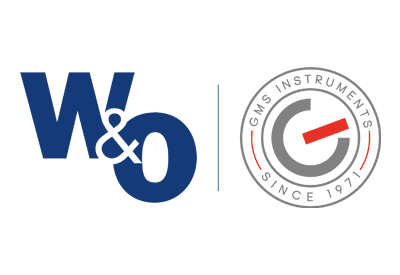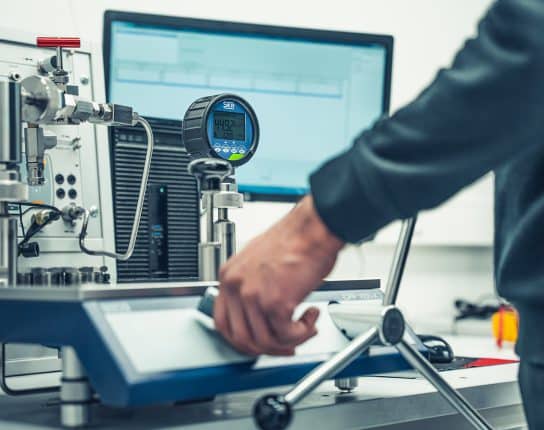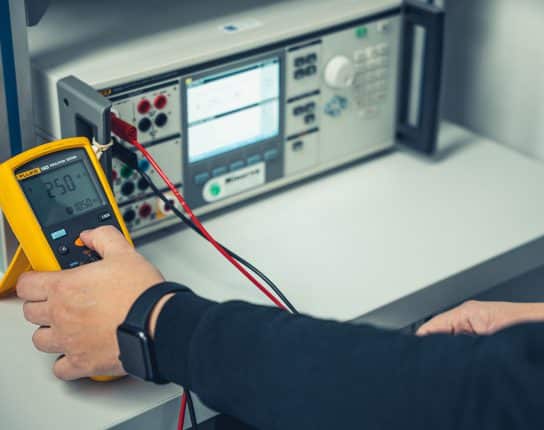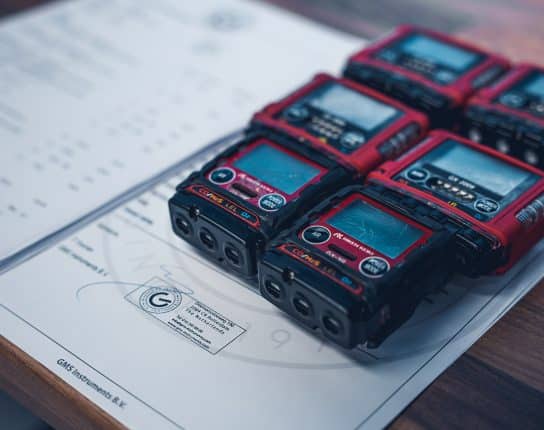
4 Common questions about temperature calibration!
Measuring should only be done when the results are reliable. The measuring of temperature is no different. In order to accurately measure temperature, you must be able to rely on the results on your thermometer or the electrical output of your thermocouple.
Imagine that the thermometer in your room indicates 21 oC. How can you be sure that the indicated temperature is correct? Maybe the room is actually 20.5 oC, or even 23 oC. To be able to definitively say that the indicated temperature is correct, you can calibrate the thermometer!
What is temperature calibration?
The most simple and widely used form of calibrating a thermometer is by comparison. Insert the thermometer into something of which you know the exact temperature (such as a cup full of ice and water) and look at what the thermometer indicates. In the case of the cup, the thermometer should indicate somewhere close to 0 °C, or 32 °F. You can then adjust the thermometer to indicate the correct temperature. This may sound crude, but you can actually use the same idea to calibrate highly accurate instruments! More on this later.
Very accuracte calibration is called fixed point calibration. For fixed point calibration, the melting point, freezing point or triple point of a specific substance such as zinc, water or argon is generated very precisely. Because we know exactly what these points should be according to the ITS-90, the measurement indicated by the temperature indicator or thermometer can be assessed in extreme detail.
Why is temperature calibration important? Is it necessary?
The importance of calibration depends entirely on the application. It does not matter that much if your barbecue indicates 202 oC instead of 205 oC (for us atleast!), but knowing whether a patient’s fever is 39 oC or 41 oC makes a massive difference! These are extremes and there are many different applications with different requirements in terms of measuring accuracy. Sometimes it may be necessary to know that your measurements are accurate, sometimes some inaccuracy is allowed.
So how do you know if you should calibrate your instrument?
This depends on the situation and the installation protocols. If you happen to see a strange reading, you could do a test similar to the cup of ice and water and check whether your instrument is close. Far more common however, is that there are standards in place for accuracy requirements. This is usually because any process is designed to function within certain accuracy margins. An inaccurate temperature reading would cause uncertainty! This is also why calibration is often done preemptively after a set period, which is usually every year. This ensures that the readings are always reliable and accurate.
How is accuracy commonly identified?
Specifically in the case of an analogue thermometer, the accuracy for high quality instrumentation is usually expressed as a percentage of the total measuring range. So if the total measuring range is 0 – 100 oC and the accuracy is Class 1.0, this means that the thermometer will be accurate to 1 degree Celsius. This accuracy is also called accuracy on the full scale. So if the thing you are measuring is exactly 50 oC, this specific thermometer should indicate somewhere in the 49-51 oC range. If the measurement falls outside of this range, the thermometer is considered inaccurate. (This also explains why choosing the correct temperature range is so important, as measuring a temperature between 0 and 5 oC on the same thermometer is subject to a deviation of up to 20% from the actual temperature!).
For resistance thermometers, the accuracy is commonly indicated with a letter as the class. The most common classes are Class B, A, and AA. Class B is the least accurate and Class AA is the most accurate. These classes are internationally defined in the IEC 60751 norm. The most recent version can be found here: IEC 60751:2022.
When an instrument has the accuracy Class B, the instrument can deviate by ± (0.30 + 0.0050 | t |) oC, where t is the absolute actual temperature. The allowed deviation is the same for positive and negative measuring ranges and because of the way the accuracy is defined, the instrument is allowed to deviate more degrees as the range goes up.
Some examples
Let’s take an example temperature of 100 oC. The formula gives us ± (0.30 + 0.0050 | 100 |) = 0.8 oC. So the instrument must indicate somewhere between 99.2 and 100.8 oC for it to be considered accurate.
Now let’s take a higher temperature, such as 400 oC. The formula gives us ± (0.30 + 0.0050 | 400 |) = 2.3 oC. This time the instrument is allowed to indicate somewhere between 397.7 and 402.3 oC.
If you would like to know more about resistance thermometers specifically, check out our blog about resistance thermometers or if you are more technically inclined, take a look at this technical explanation by WIKA.
For thermocouples another class system is used, where Class 1 and Class 2 are the most common, but special accuracies can also be achieved. These are internationally defined in another norm, the IEC 60584-1. The most recent version is found here: IEC 60584-1:2013. However, because thermocouples come in many different material combinations, the accuracy Class 1 may not mean the same for every type of thermocouple. Because the measuring range is usually higher on thermocouples than on thermometers or resistance thermometers, the tolerances are also a little higher.
Let’s take a look at an example. The formula for Class 1 accuracy for a type K thermocouple is ± (1.5 or 0.0050 | t |) oC, where the greater value applies. Note that the formula now has “or” instead of the plus sign and that the initial value is much higher than with the resistance thermometers. Also, the greater value applies, so there is a point up to which the accuracy is stable at 1.5 oC, after which it changes to 0.5% of the actual temperature. For this specific Class, that would be at 300 oC (0.0050 x 300 = 1.5). If you would like to know more about thermocouples, check out this technical paper by WIKA.
The calibration procedure
For this article we stick to the answers to the four main questions we receive about temperature calibration, but in this blog we follow up this one with a more in depth explanation of the calibration procedure with an example.
If you would like to know more about calibration, the calibrators we offer or anything related, let us know!
Related
More of the same



